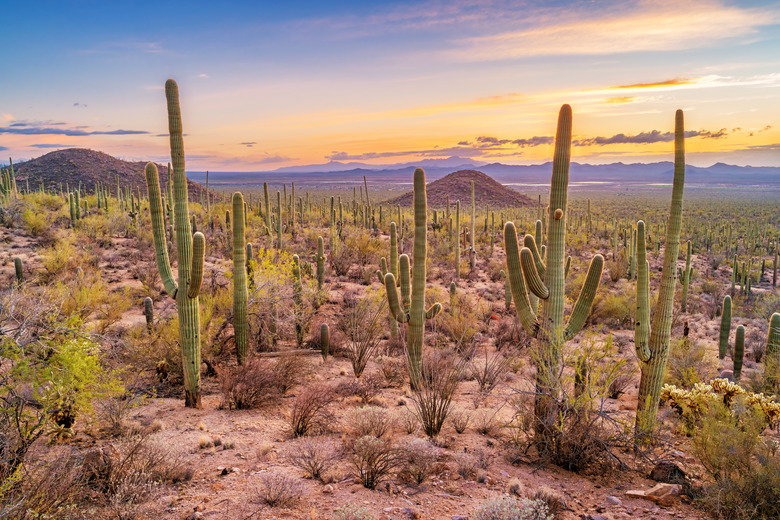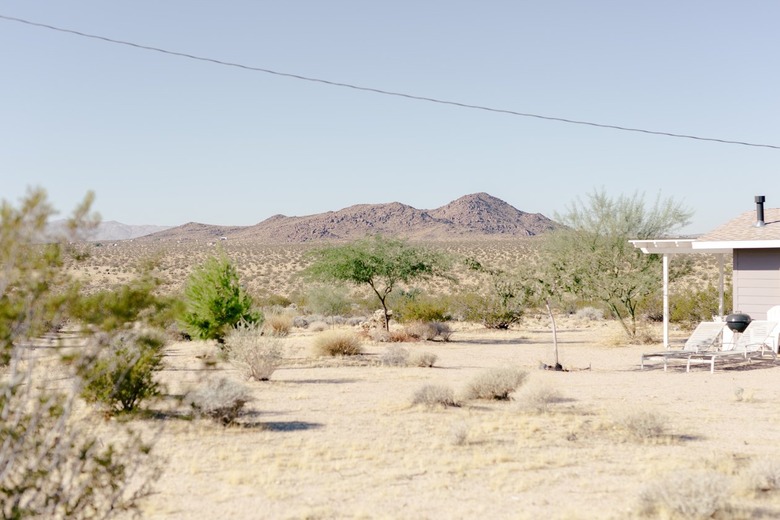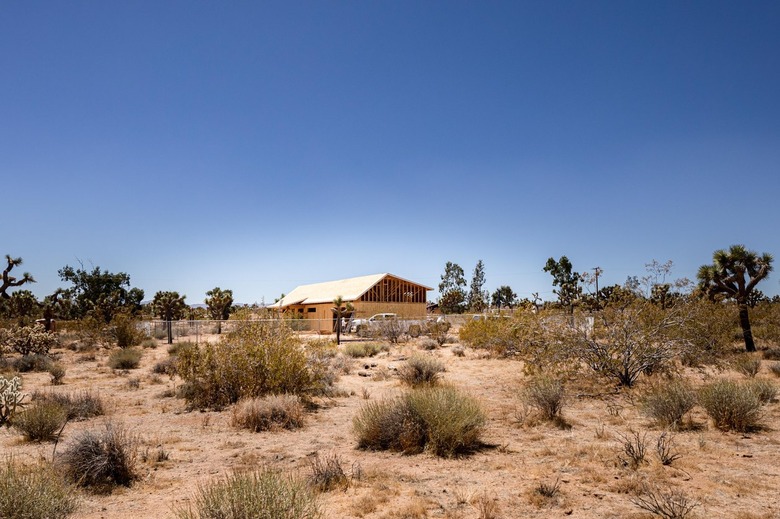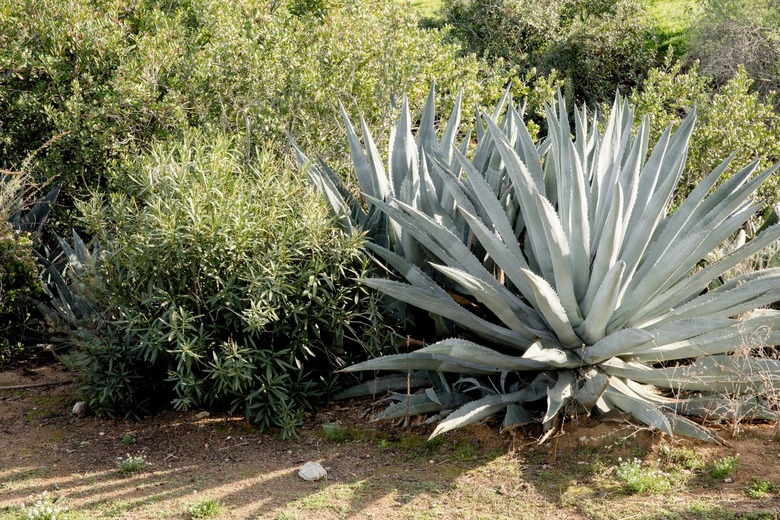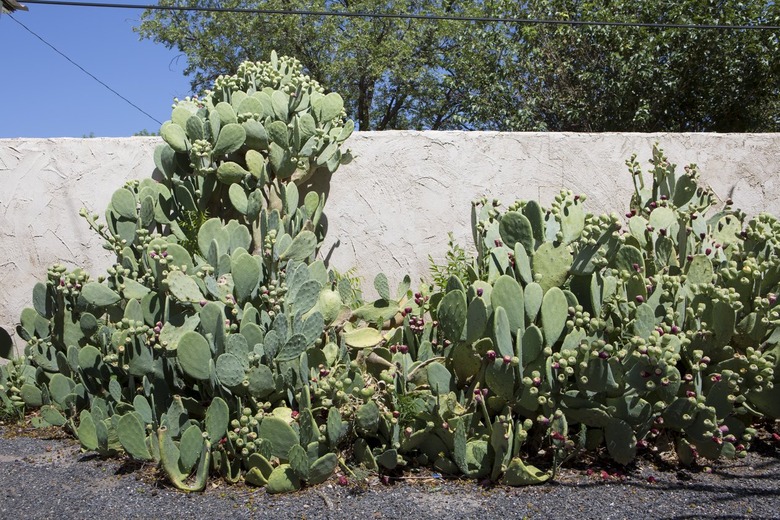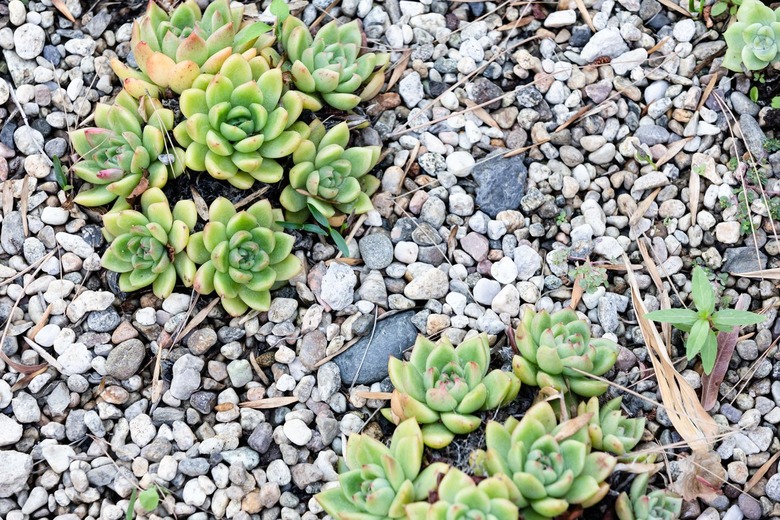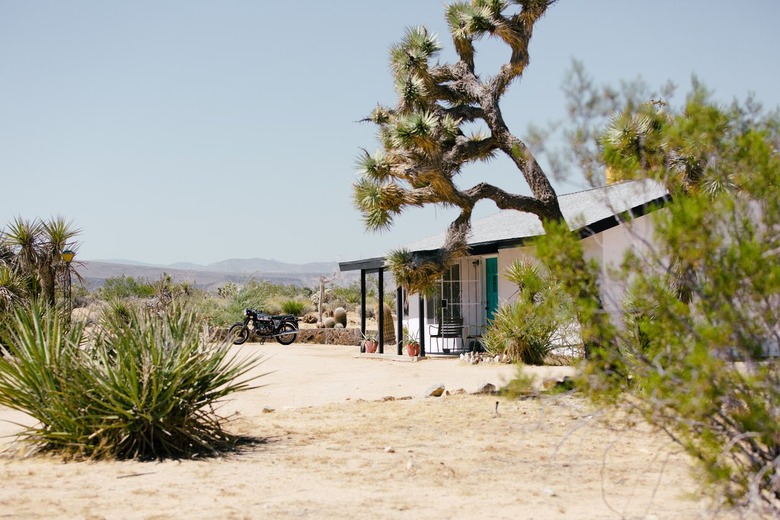Plants That Live In The Desert
We may receive a commission on purchases made from links.
Given the dry, arid conditions, many people assume that the desert is not a place for living things and plant life in particular. A lack of regular water makes the desert seem like a very unlikely place for living things to grow. However, there are a number of plants that live in the desert, and their rugged constitution makes the environment an ideal place for them to live.
Types of Deserts
Types of Deserts
While the environment that comes to mind when most people envision a desert is a hot, dry place with palm trees and scorching sun, only some deserts are like that. Generally, a desert is defined as any natural environment that gets between 1 and 15 inches of precipitation every year. However, this does not have to mean that a desert is a hot place. In fact, there are some deserts that are cold all year round.
These are the four types of desert in the world:
- Suptropical deserts: The desert with which most North Americans are familiar, subtropical deserts are found in places like Mexico, southern California and Arizona. These are hot, dry climates with very little rainfall. It is cooler at night and in the winter, but hot and dry temperatures persist year round. Rainfall is rare and not prolonged.
- Cold winter deserts: Found in places like the Great Basin and the Colorado Plateau, these deserts have summers that are hot and dry and winters that are cold with a low level of snow and rainfall.
- Coastal deserts: Warm summers and chilly winters. The desert area, while near a coast, is maintained by wind blowing the moisture away from the land.
- Polar deserts: Cold the whole year round but still receive very little moisture by way of precipitation.
How Do Plants Survive in the Desert?
How Do Plants Survive in the Desert?
While the desert, particularly the subtropical desert, seems like it would be a very hostile place for living things, the fact is that many species of plants and animals have evolved and adapted to the environment.
Many of the plants that survive in the desert have leaves that are adapted to retain and store moisture. This means that rather than drinking it up and then quickly needing more, these desert plants slowly mete out the water they stored since the last rainfall and utilize it slowly over time.
Many plants, such as desert wildflowers, spread their seeds across the desert floor during the cooler fall and winter months. Late December or strong March rains can help these plants to bloom early and beautifully. These are called winter annuals. Other flowers bloom whenever the weather conditions are right, requiring only a small amount of water to allow the seeds to germinate and break through the soil.
What Kinds of Plants Live in the Desert?
What Kinds of Plants Live in the Desert?
Many different varieties of desert plants live in the desert, from wildflowers to shrubbery to spiny cacti and different trees. The Joshua tree (Yucca brevifolia, USDA zones 6-10) is one of the most famous of all the desert plants. It has strange, almost claw-like arms that bend out at odd directions and are topped with spiky balls. This plant exists in a part of the Mojave desert with the right degree of altitude and rainfall, although the species is under threat of extinction due to climate change.
Bougainvilleas (Bougainvillea spp., zones 9-11) have gorgeous flowerlike bracts in shades of pink, red, purple, yellow, and white that bloom on scrambling vines and are often found draped over fences, walls, and garden trellises. The colorful bracts protect the leaves that hold the actual white flowers of the plant. California poppies (Eschscholzia californica, zones 6-10) are gorgeous, orange-red flowers that bloom only in the desert after periods of heavy rainfall in the late winter.
Mesquite trees (Prosopis pallida, zones 10-11) and ponderosa pines (Pinus ponderosa, zones 3-7) are other trees that are native to the desert and can flourish in extreme heat and dry conditions. Succulent plants are also populous in the desert. These plants have thick, flesh-like leaves that store water and allow the plant to withstand the long dry seasons. Medicinal aloe (Aloe vera, zones 10-12) and the century plant (Agave americana, zones 8-10) have long, thick and dense leaves to store water.
Cacti Living in the Desert
Cacti Living in the Desert
Cacti are among the most popular and most famous of the succulent varieties. While succulents like the aloe plant store water throughout their dense, fleshy bodies, cacti have their water supply regulated to one single stem, while the rest of the body of the cactus is covered in sharp spikes or spines.
There are numerous varieties of desert cactus, some that are tall and tree-like such as the saguaro cactus (Carnegiea gigantea, zones 9-11), famous for its goalpost-like shape, and some that are small and round like the often-poached barrel cactus (Echinocactus spp., zones 10-11). The pencil cactus (Euphorbia tirucalli, zones 9-12) looks almost like land-bound seaweed, and while it is delicate and green and attractive, the milky liquid inside is poisonous to people and animals.
The prickly pear (Opuntia spp., zones 3-9 depending on species) is a beautiful and noticeable cactus. It is made of several cacti pods and is topped with lovely pink flowers. Every single part of this cactus is edible once it has been despined. It has an almost neon-style hot pink color to its flesh and extract, which are used in everything from tacos to margaritas.
Succulents Living in the Desert
Succulents Living in the Desert
Aside from cactus, agave, and aloe vera, there are numerous other succulent plants in the desert. Succulent plants like the pencil plant, for example, have green stems that are almost seaweed-like. These stems are usually a bright green but can turn to a coral color when they are under stress from too little water, too much direct sunlight, or other conditions.
Other succulents are desert producers of agave syrup and the substances used to make beverages like ginger beer and tequila. The ghost plant, which has a cabbage-like shape, is exceptionally popular as a houseplant and for landscaping in the desert. These plants can produce small, yellow flowers and thrive in sandy soil.
Other Common Desert Plants
Other Common Desert Plants
There are a variety of other desert plants. When getting desert information for a trip, you should look to see which plants are available and when. Depending on the rainfall in the winter months, there may be a tremendous bloom of flowers and plants in different parts of the desert.
Palm trees are famously seen in the desert, although not the kind of coconut palm trees that you would find in tropical regions like Hawaii or the southern tip of Florida. The palm trees found in the desert are not usually fruit-bearing. Desert species include the ponytail palm (Beaucarnea recurvata, zones 10-11), which has curly leaves and is adept at storing water. There is also the California fan palm (Washingtonia filifera, zones 9-11), which is the only species of palm native to the high-desert area. These are distinctive because of their shaggy trunks.
